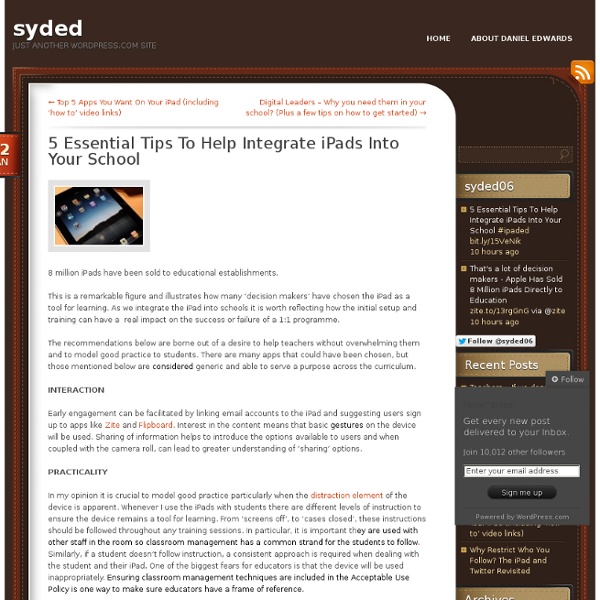Zoom
Trash
Related:



The Ultimate Guide To Apple’s Presence In Education Added by Jeff Dunn on 2012-08-31 All eyes are on education right now. Whether it’s in the political theater or the venture capitalists, everyone has set their sights on the future leaders of tomorrow. Some companies, like Apple , have long realized the potential of this demographic and have specifically targeted them with iPads, iPod Touches, and other devices . In an effort to share exactly how Apple is targeting students, MDG Advertising whipped up a thought-provoking infographic. Smart devices are having a real impact on both literacy and learning levels. Awesome Apple logo via DeviantArt Comments are closed.
What can you do with an iPad in the classroom? It’s a tool, it’s a tool, it’s a tool. The iPad is not going to replace teachers or ‘fix’ education. There is a cost implication that must be taken into account and only an educator will know if it is right for their students. Indeed the cost-benefit analysis for an establishment must take into account a host of factors when considering iPad use in the classroom. However, if there are iPads in the classroom, there are a number of applications that can enhance learning and assist the educator in developing student skills. Assessment for Learning The most valuable weapon in an educators arsenal is feedback. Applications such as eclicker, Socrative and Nearpod have the ability to provide instant feedback for every child in the classroom. Collaboration Setting a collaborative task is a tried and tested technique to allow students to question each other in the pursuit of an answer. Practical Use These are a few of the applications that have been made a little easier by the use of an iPad
Don Quixote Published in two volumes, in 1605 and 1615, Don Quixote is considered the most influential work of literature from the Spanish Golden Age and the entire Spanish literary canon. As a founding work of modern Western literature,[citation needed] and one of the earliest canonical novels, it regularly appears high on lists of the greatest works of fiction ever published, such as the Bokklubben World Library collection which cites Don Quixote as authors' choice for the "best literary work ever written",[1] and has been translated into more languages than any book other than the Bible.[citation needed] It has had major influence on the literary community, as evidenced by direct references in Alexandre Dumas' The Three Musketeers (1844) and Mark Twain's Adventures of Huckleberry Finn (1884). Summary[edit] Miguel de Cervantes said that the first chapters are taken from "The Archive of La Mancha" and the rest translated from the Arabic from the Moorish author Cid Hamet Ben Engeli. Part 1[edit]